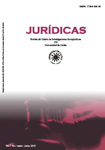Autores/as
Resumen
El incidente de desacato es un instrumento jurídico con el que cuentan las personas a quienes se les ha protegido un derecho fundamental por vía de tutela. Su fin último es presionar el cumplimiento inmediato de la orden impartida por el juez, con la amenaza de una sanción jurídica a los funcionarios o particulares accionados que hayan vulnerado o se encuentren en curso de una vulneración de derechos constitucionales fundamentales, y que ante una orden de protección plasmada en una sentencia de tutela, se muestran renuentes al cumplimiento de dicha orden, que por demás es perentoria y de obligatorio cumplimiento. Esta sanción se encuentra prevista en los artículos 27 y 52 del Decreto 2591 de 1991. En los últimos años, en Colombia se han presentado casos muy frecuentes en los que las órdenes de tutela son burladas por quienes están avocados a su cumplimiento y en la práctica judicial se han presentado grandes inconvenientes a la hora de aplicar las sanciones producto de los incidentes de desacato. En ese contexto se realizó la investigación tomando como punto de partida la situación particular de cuatro ciudades a través de la aplicación de un instrumento a algunos incidentes existentes para los años 2007 y 2008 en los juzgados de diferentes áreas de conocimiento y orden jerárquico, y mediante la toma de una muestra para caracterizar y determinar el grado de eficacia de esta importante herramienta. Las ciudades analizadas por el Grupo Nuevas Visiones del Derecho fueron Medellín, Cali y Neiva. El Grupo de Investigación en Derechos Humanos de la Universidad del Rosario tomó las muestras de la ciudad de Bogotá en el año 2007, las cuales se referencian en este documento.
Citas
BECKER, Gary. (1968). “Crime and Punishment: An Economic Approach”. Journal of Political Economy, No. 76, pp.169-217.
BECKER, Gary & STIGLER, George. (1974). “Law Enforcement, Malfeasance and Compensation of Enforcers”. Journal of Legal Studies, No. 3, pp. 1-17.
BOTERO MARINO, Catalina. (2003, julio-septiembre). La acción de tutela contra providencias judiciales en el ordenamiento jurídico colombiano. Foro Constitucional Iberoamericano Índice Nº 3. En: http://www.uc3m.es/bjc.htm [Consultado el 5 de agosto de 2007].
BOTERO MARIO, Catalina & JARAMILLO, Juan Fernando. “El Conflicto de las Altas Cortes colombianas en torno a la tutela contra sentencias” Investigación de la Universidad de los Andes. En: http://www.djs.org.co/pdf/blog/tutelaCBMJFL.pdf
CÓRDOBA TRIVIÑO, Jaime. (2007, mayo). La tutela contra sentencias judiciales. El caso de Colombia. Revista Tutela Acciones populares y de cumplimiento, No. 89, Tomo VIII. Bogotá. Editorial Legis.
GARCÍA VILLEGAS, Mauricio (2006). No sólo de mercado vive la democracia. El fenómeno del (IN) cumplimiento del derecho y su relación con el desarrollo, la justicia y la democracia. Colombia: Red Revista de Economía Institucional. pp. 95-134.
GARCIA VILLEGAS, Mauricio & RODRÍGUEZ, César. (2001). “La acción de tutela”. En: El caleidoscopio de las justicias en Colombia. Bogotá: Colciencias, Siglo del hombre.
GARCÍA VILLEGAS Mauricio & UPRIMNY YEPES, Rodrigo. (2006). “¿Qué hacer con la tutela contra sentencias?”. En: Justicia constitucional. El rol de la Corte Constitucional en el Estado contemporáneo. Bogotá: Editorial Legis – Pontificia Universidad Javeriana. pp. 277-291.
GONZÁLEZ ORDOVÁS, María José. (2004). Ineficacia, anomia y fuentes del derecho. Madrid: Dykinson.
HENAO OROZCO, Rubén Darío. (2006). “Tutela contra sentencias de las altas cortes o choque de vanidades”. Prolegómenos, Derechos y Valores, No. 17, Vol. IX. pp.129-13. Bogotá.
HIERRO, Liborio. (2005). La eficacia de las normas jurídicas. Madrid: Ariel.
LOÑDONO, Beatriz. (2009). “Eficacia del incidente de desacato. Estudio de caso, Bogotá (2007)”. Universitas, No.118, pp. 15-30. Bogotá.
ORJUELA GONGORA, Carlos. (2007). “¿Tutela contra providencias judiciales?”. Revista Tutela Acciones populares y de cumplimiento, No.90, Tomo VIII, pp. 994-1000. Bogotá: Editorial Legis.
STIGLER, George. (1970). “The optimum enforcement of law”. Journal of Political Economy, No. 3, Vol. 78, pp. 526-536. University of Chicago Press.
TYLER, T. R. (1990). Why people obey the law. New Haven: Yale.
ZORRILLA RUIZ, Manuel María. (2006). Teoría general para un entendimiento razonable de los episodios del mundo del derecho. 2 ed. Madrid: Dickinson.

 PDF
PDF
 FLIP
FLIP




















